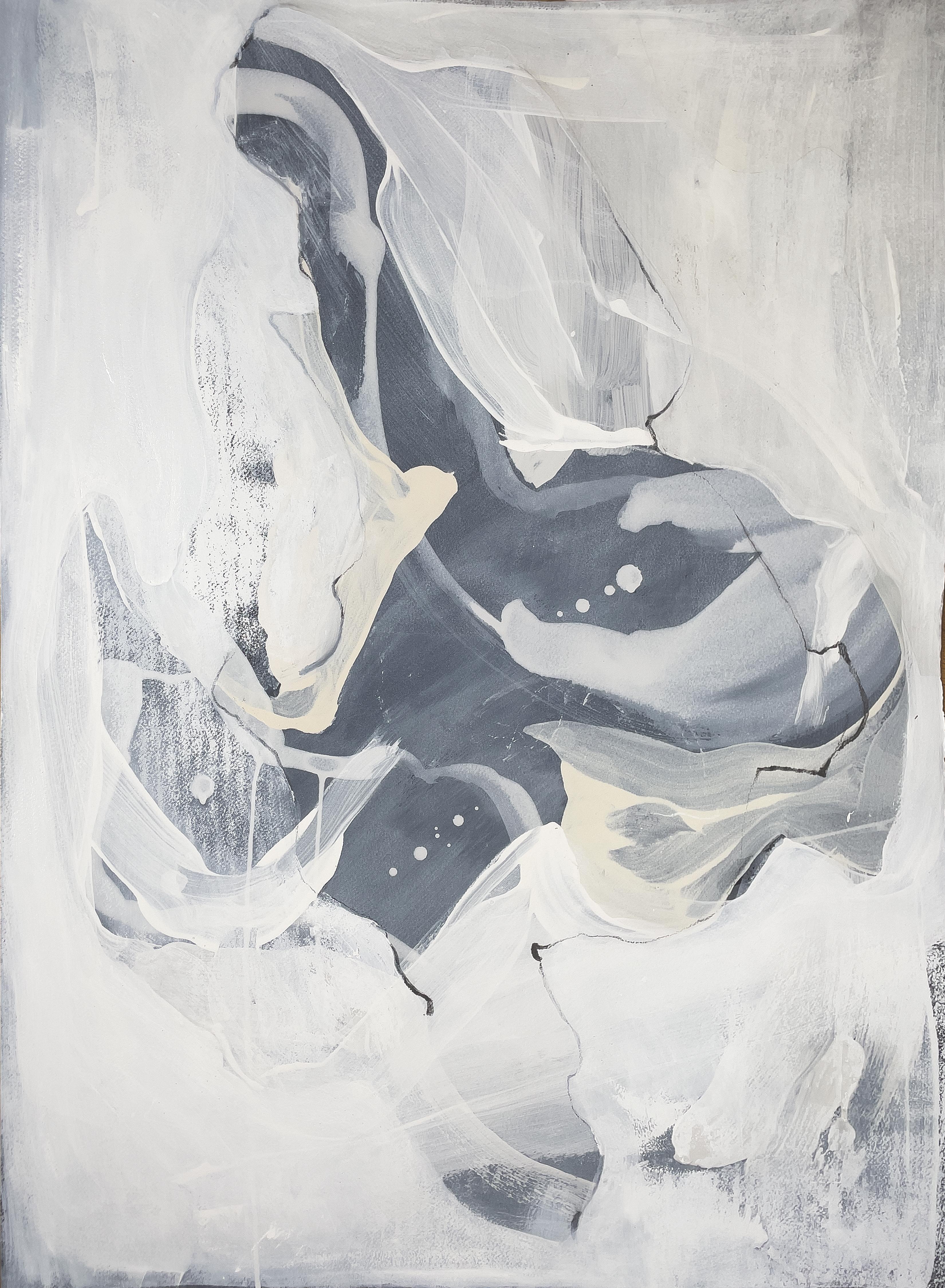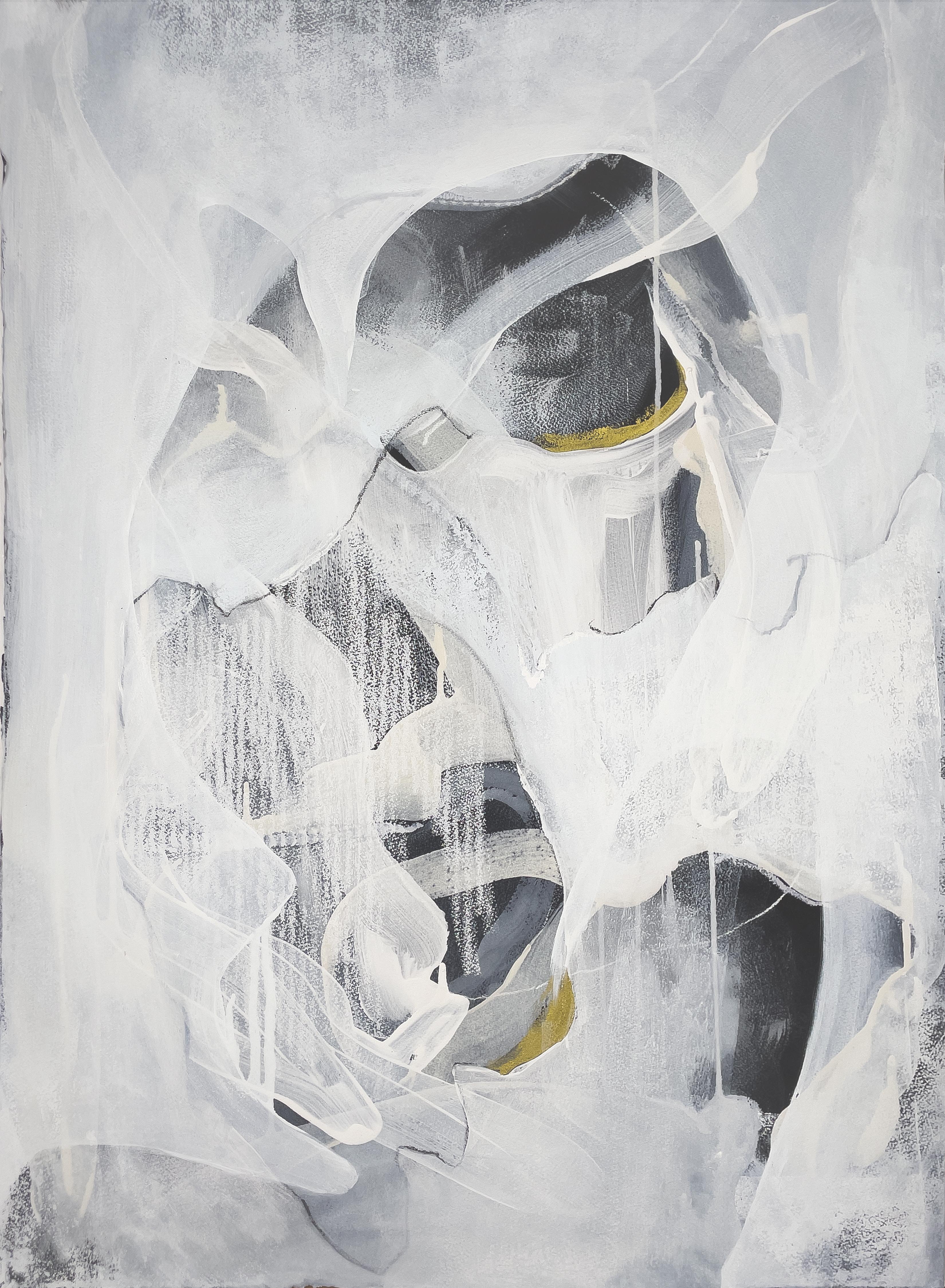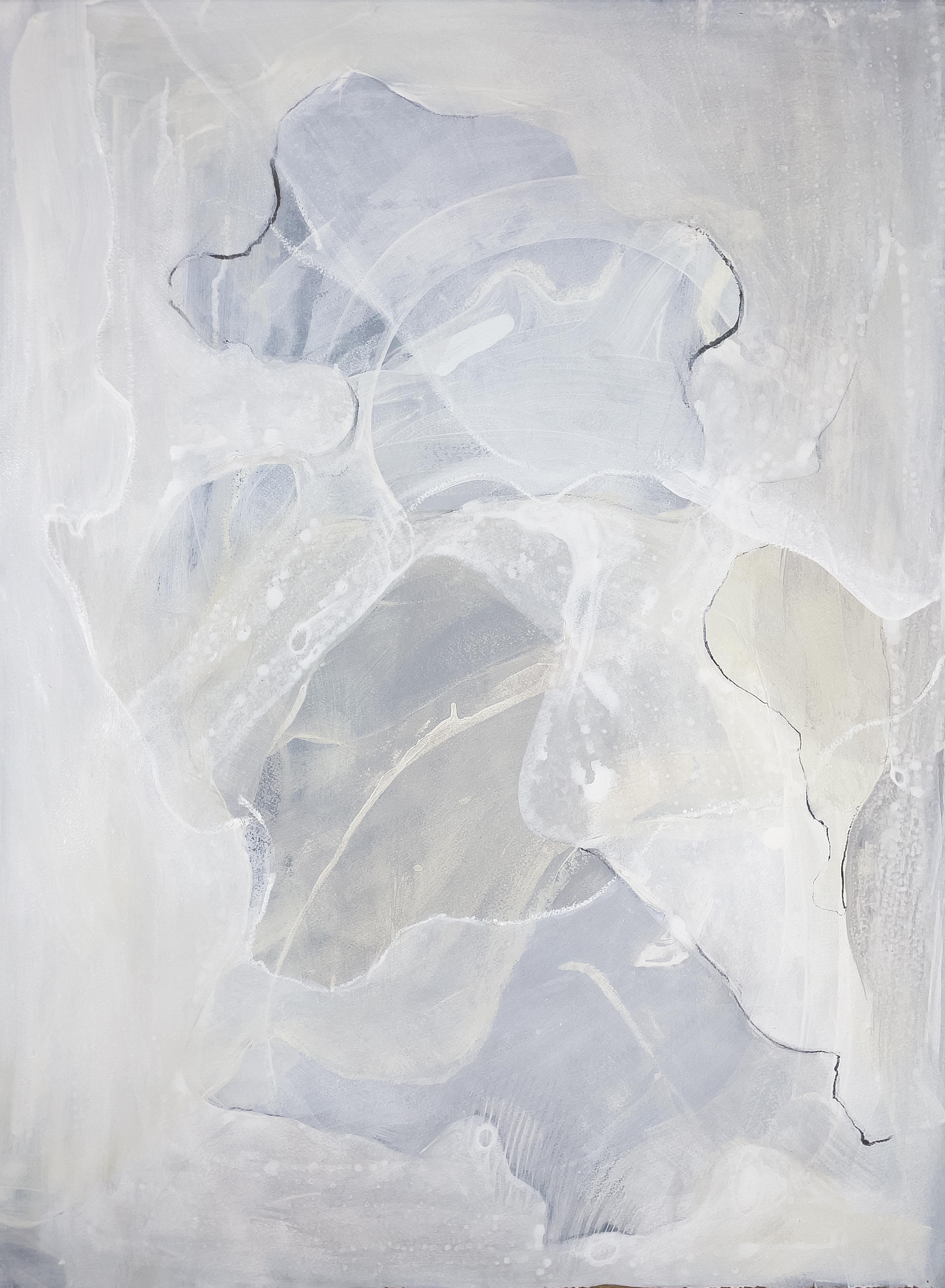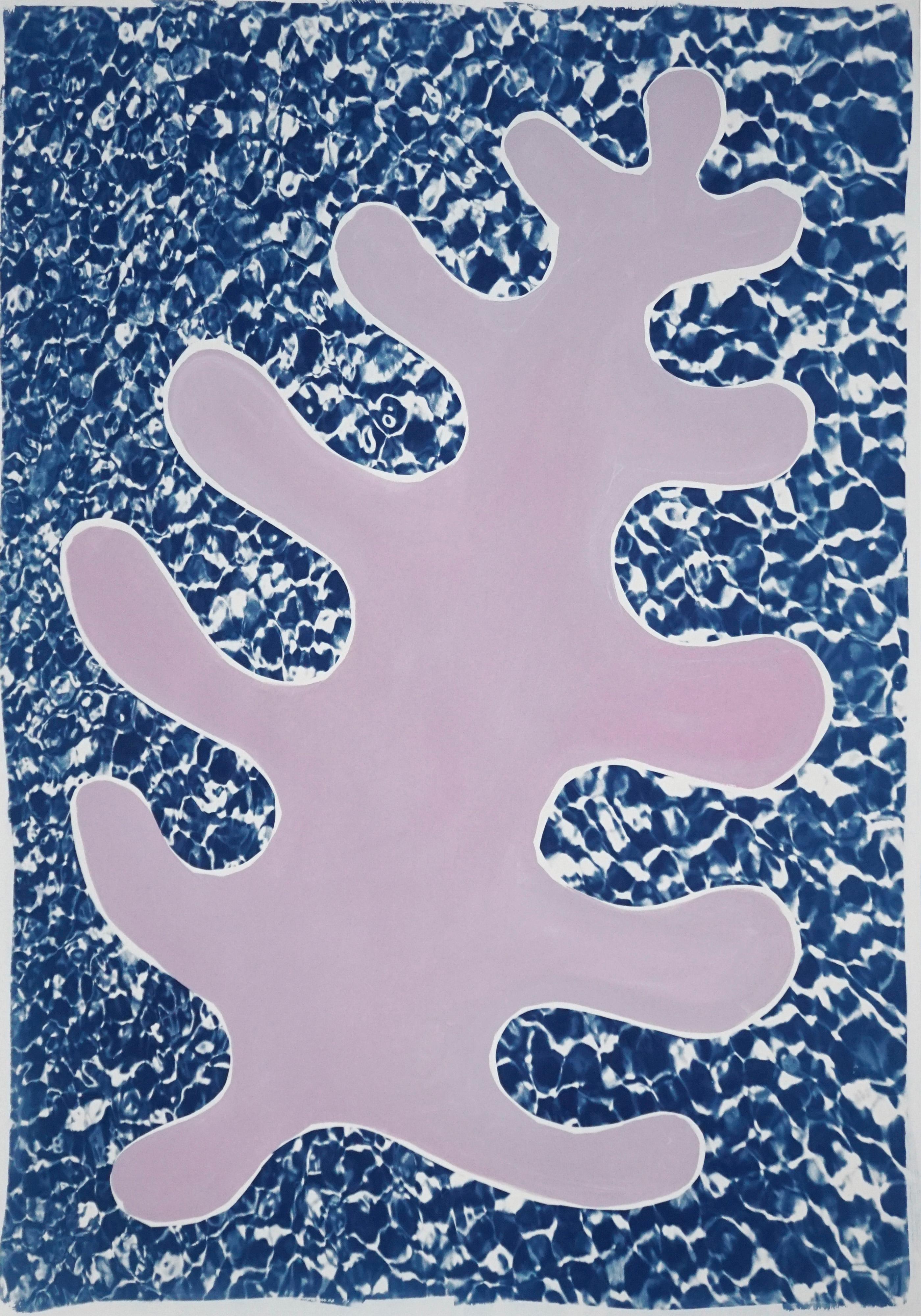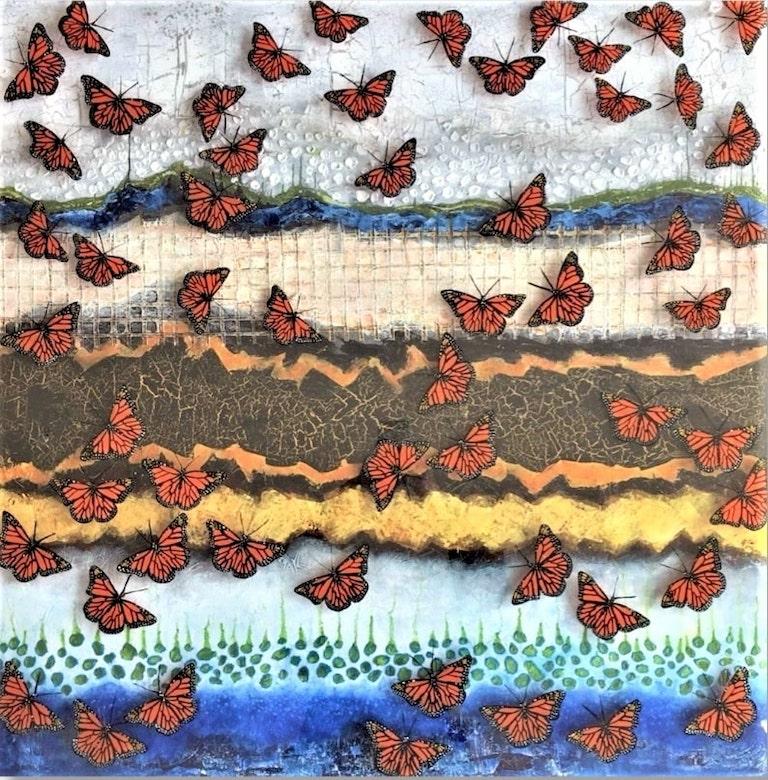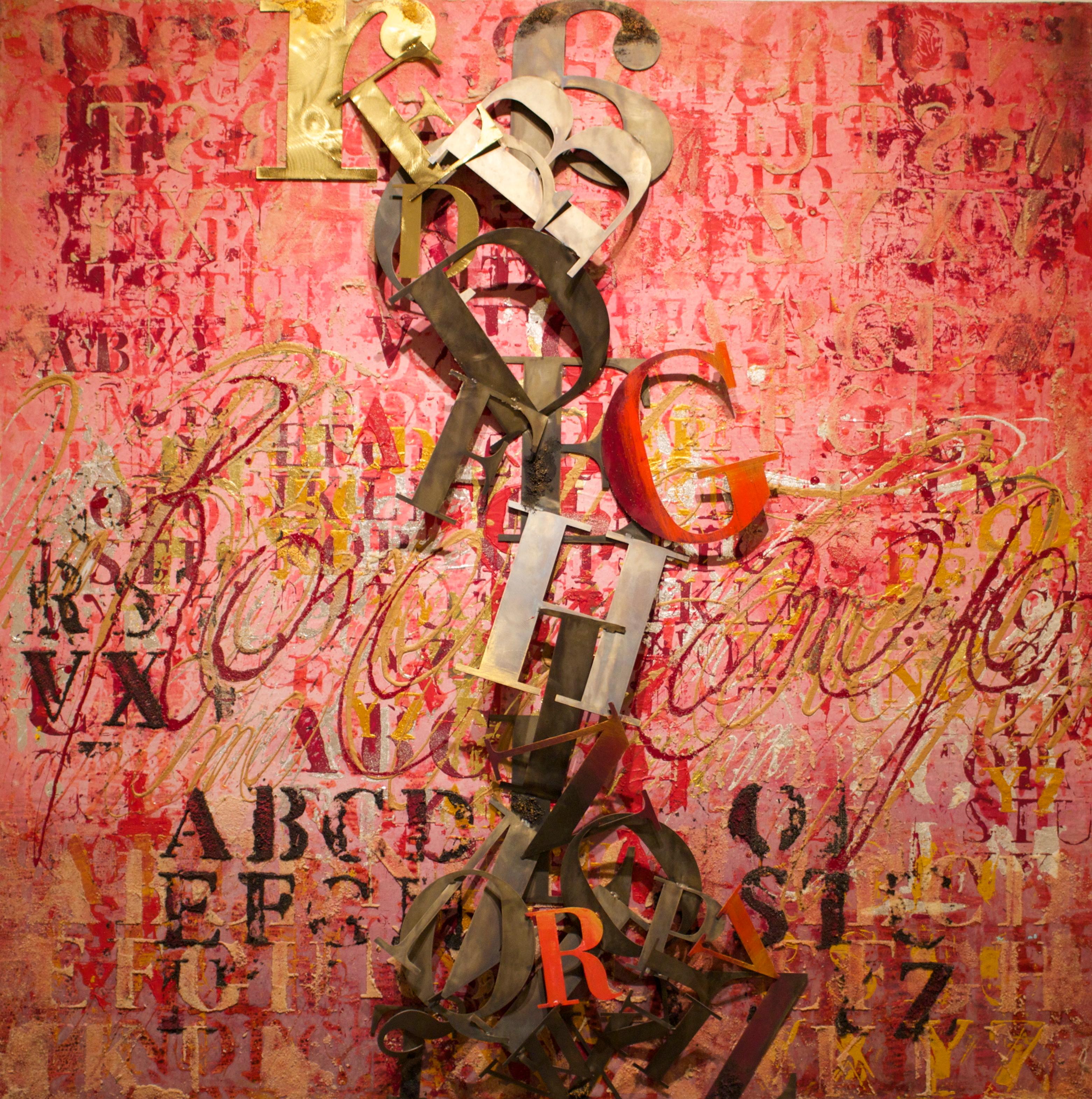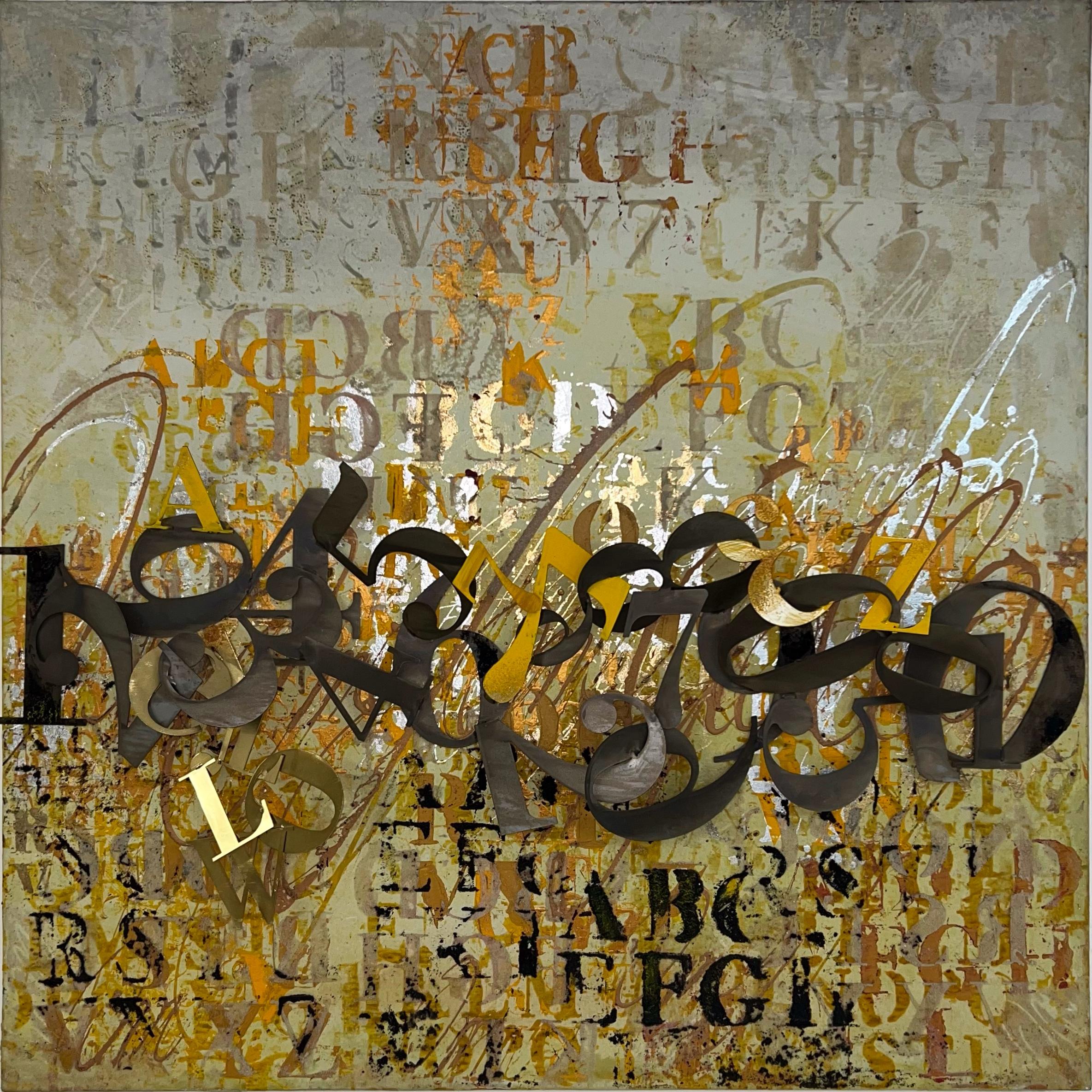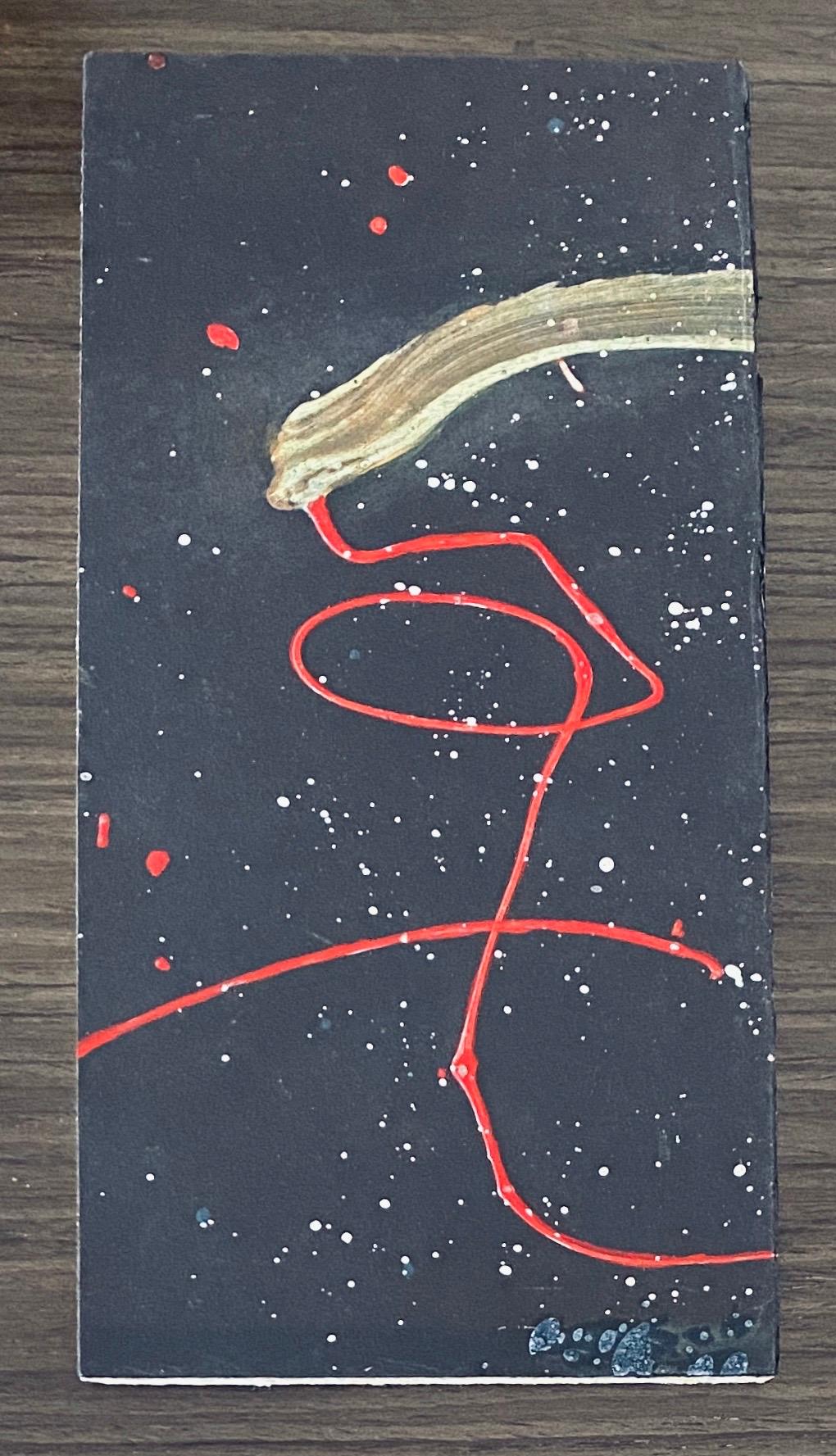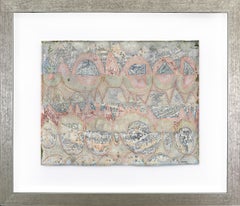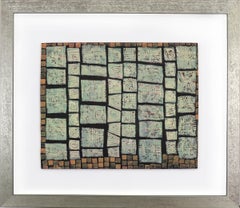
Mid Century Modern Ink and Acrylic Abstract Painting, Light Green, Brown, White
View Similar Items
Want more images or videos?
Request additional images or videos from the seller
1 of 11
Edward MarecakMid Century Modern Ink and Acrylic Abstract Painting, Light Green, Brown, White1946-1952
1946-1952
About the Item
- Creator:Edward Marecak (1919 - 1993)
- Creation Year:1946-1952
- Dimensions:Height: 19.75 in (50.17 cm)Width: 22.75 in (57.79 cm)Depth: 0.75 in (1.91 cm)
- Medium:
- Movement & Style:
- Period:
- Condition:
- Gallery Location:Denver, CO
- Reference Number:Seller: 260851stDibs: LU27310573992
About the Seller
5.0
Platinum Seller
These expertly vetted sellers are 1stDibs' most experienced sellers and are rated highest by our customers.
Established in 1979
1stDibs seller since 2013
264 sales on 1stDibs
Typical response time: 5 hours
More From This SellerView All
- 1970s Abstract Acrylic Mixed Media Painting, Dark Purple, Black, BlueBy Edward MarecakLocated in Denver, COCrayon and acrylic paint mixed media painting by Denver artist Edward Marecak (1919-1993). Abstract geometric painting done in rich colors of dark purple, blue, and black. Presented ...Category
Mid-20th Century Abstract Abstract Paintings
MaterialsPaper, Crayon, Acrylic
$1,875 Sale Price25% Off - Stone Quarry, 1960s Abstract Acrylic Paper Collage by Margo Hoff, Purple GrayBy Margo HoffLocated in Denver, COAn original signed framed abstract expressionist painting by mid-century modern Chicago woman artist, Margo Hoff (1910-2008), "Stone Quarry" was created using acrylic, crayon and paper collage on board in shades of purple, blue, brown, white and black. Presented in a custom frame, outer dimensions measure 48 ½ x 40 ½ x 1 ¾ inches. Image size is 48 x 40 inches. Provenance: Estate of the artist, Margo Hoff About the Artist: A prolific artist, Margo Hoff’s exquisite style evolved throughout her career yet was always rooted in the events, people, and places in her life. The human experience was her soul focus, expressed through her eyes alone. Born in 1910 in Tulsa, Oklahoma, Hoff began creating white-clay animals at a young age, giving them to her friends and family. At eleven she contracted typhoid fever and was bedridden for a summer. During her convalescence, she drew and made cutouts, and it was during this time that her bold, artistic imagination came alive. She began formal art training in high school and continued her education at the University of Oklahoma, Tulsa. In 1933 she moved to Chicago and attended the National Academy of Art and the School of the Art Institute of Chicago. Between 1933 and 1960—her Chicago years—Hoff’s works was deeply rooted in a figurative, regionalist style. She often used elements of magical realism, and many of her paintings have dreamlike qualities. As a child she learned about color by grinding down rocks, plants, and berries. Her color pallet during the Chicago years is indicative of her early-life color experimentation as she consistently used warm, earth tones in her work. Hoff was a born adventurer and traveled extensively. She lived, worked, taught, and painted in Europe, Mexico, Beirut, Lebanon, Uganda, Brazil, and China. She also showed at the Denver Art Museum’s Annual Western Exhibitions in 1952-54, 56, and 57. In 1957 she showed along side Colorado modernist Vance Kirkland at the Denver Art Museum’s exhibition, Man's Conquest of Space. What was once a focus on the representational, her work began to change after 1957 when she saw Sputnik in its orbit around Earth. At that moment, feet firmly placed on the ground, she was able to imagine herself in space, looking down from the cosmos, and what she saw was an abstracted world. She then had the opportunity to peer into an electron microscope where once again she was looking down into what seemed to be a realm of pure abstraction. These two events profoundly changed her perspective and she began to move from figural painting to abstract, geometric collage. In 1960, Hoff moved to New York City and she began creating collages. Placing the canvas on the ground, and working from all sides, she used strips of painted paper and tissue—and later painted pieces of canvas—glued onto the canvas surface, building layer upon layer, shape against shape, “action of color next to stillness of color.” She believed these simplified, abstracted forms held the spirit of the subject in the same way poetry reduces words to their essence. These pieces range from aerial cityscapes, to dancers in motions, to flora...Category
1960s Abstract Expressionist Mixed Media
MaterialsAcrylic, Paper, Crayon, Mixed Media, Board
- Winter Palace, 1960s Mid Century Modern Framed Abstract Mixed Media PaintingBy Edward MarecakLocated in Denver, COWinter Palace is an abstract acrylic and watercolor on paper painting by Edward Marecak (1919-1993) with pastel pinks, blues and greens. Presented in a new custom frame, outer dimensions measure 19 ¾ x 23 x 1 inches. Image size is 11 ⅝ x 14 ⅝ inches. Painting is clean and in very good vintage condition - please contact us for a detailed condition report. Provenance: Estate of Edward Marecak Expedited and international shipping is available - please contact us for a quote. About the Artist: Born to immigrant parents from the Carpathian region in Slovakia, Marecak grew up with his family in the farming community of Bennett’s Corners, now part of the town of Brunswick, near Cleveland, Ohio. When he turned twelve, his family moved to a multi-ethnic neighborhood of Poles, Czechs, Slovaks and Slovenians in Cleveland. His childhood household cherished the customs and Slavic folk tales from the Old Country that later strongly influenced his work as a professional artist. During junior high he painted scenery for puppet shows of "Peter and the Wolf...Category
1960s Abstract Abstract Paintings
MaterialsPaper, Mixed Media, Acrylic, Watercolor
- A Small City Park, Abstract Painting Acrylic Watercolor Painting, Green BrownBy Edward MarecakLocated in Denver, CO"A Small City Park", acrylic and watercolor on paper by Denver artist Edward Marecak (1919-1993) of an abstract park broken into four quadrants, separated by brown and white striped borders with different shaped ponds. Inspired by City Park in Denver, Colorado where the artist frequented. Presented framed with all archival materials, outer dimensions measure 21 ¾ x 18 ¾ inches. Image size measures 12 x 15 inches. Painting is clean and in good condition - please contact us for a detailed condition report. Provenance: Estate of Edward Marecak Expedited and international shipping is available - please contact us for a quote. About the Artist: Born to immigrant parents from the Carpathian region in Slovakia, Marecak grew up with his family in the farming community of Bennett’s Corners, now part of the town of Brunswick, near Cleveland, Ohio. When he turned twelve, his family moved to a multi-ethnic neighborhood of Poles, Czechs, Slovaks and Slovenians in Cleveland. His childhood household cherished the customs and Slavic folk tales from the Old Country that later strongly influenced his work as a professional artist. During junior high he painted scenery for puppet shows of "Peter and the Wolf," awakening his interest in art. In his senior year in high school he did Cézanne-inspired watercolors of Ohio barns at seventy-five cents apiece for the National Youth Administration. They earned him a full scholarship to the Cleveland Institute of Art (1938-1942) where he studied with Henry George Keller whose work was included in the 1913 New York Armory Show. In 1940 Marecak also taught at the Museum School of the Cleveland Institute. Before being drafted into the military in 1942, he briefly attended the Cranbrook Academy of Art near Detroit, one of the nation’s leading graduate schools of art, architecture, and design. A center of innovative work in architecture, art and design with an educational approach built on a mentorship model, it has been home to some of the world’s most renowned designers and artists, including Eero Saarinen, Charles Eames, Daniel Libeskind and Harry Bertoia. Marecak’s studies at Cranbrook with painter Zoltan Sepeshy and sculptor Carl Milles were interrupted by U.S. army service in the Aleutian Islands during World War II. Following his military discharge, Marecak studied on the G.I. Bill at the Colorado Springs Fine Arts Center from 1946 to 1950, having previously met its director, Boardman Robinson, conducting a seminar in mural painting at the Cleveland Institute of Art. Although he did not work with Robinson at the Fine Arts Center, who had become quite ill - retiring in 1947 - he studied Robinson’s specialty of mural painting before leaving to briefly attend the Cranbrook Academy in 1947. That same year he returned to the Fine Arts Center, studying painting with Jean Charlot and Mary Chenoweth, and lithography with Lawrence Barrett with whom he produced some 132 images during 1948-49. At the Fine Arts Center he met his future wife, Donna Fortin, whom he married in 1947. Also a Midwesterner, she had taken night art courses at Hull House in Chicago, later studying at the Art Institute of Chicago with the encouragement of artist Edgar Britton. After World War II she studied with him from 1946 to 1949 at the Fine Arts Center. (He had moved to Colorado Springs to treat his tuberculosis.) Ed Marecak also became good friends with Britton, later collaborating with him on the design of large stained glass windows for a local church. In 1950-51 Marecak returned to the Cleveland Institute of Art to complete his Bachelor of Fine Arts degree. A year later he was invited to conduct a summer class at the University of Colorado in Boulder, confirming his interest in the teaching profession. In 1955 he received his teaching certificate from the University of Denver. Vance Kirkland, the head of its art department, helped him get a teaching job with the Denver Public Schools so that he and his family could remain in the Mile High City. For the next twenty-five years he taught art at Skinner, Grove, East, George Washington and Morey Junior High Schools. Prior to coming to Colorado, Marecak did watercolors resembling those of Winslow Homer, John Singer Sargent and Charles Burchfield. However, once in Colorado Springs he decided to destroy much of his earlier ouevre, embarking on a totally new direction unlike anything he had previously done. Initially, in the 1940s he was influenced by surrealist imagery and Paul Klee, and in the West by Indian petroglyphs and Kachinas. His first one-person show at the Garrett Gallery in Colorado Springs in 1949 featured paintings and lithographs rendered in the style of Magic Realism and referential abstraction. The pieces, including an oil Witch with Pink Dish, foreshadowed the output of his entire Colorado-based career, distinguished by a dramatic use of color, intricacy of execution and attention to detail contributing to their visual impact. He once observed, "Each time I start a new painting I always fool myself by saying this time keep it simple and not get entangled with such complex patterns, color and design; but I always find myself getting more involved with richness, color and subject matter." An idiosyncratic artist proficient in oil, acrylic, watercolor, gouache and casein, he did not draw upon Colorado subject matter for his work, unlike many of his fellow painters in the state. Instead he used Midwest landscape imagery, bringing to life in it witches and spirits adapted from the Slovakian folk tales he heard growing up in Ohio. A number of his paintings depict winter witches derived from the Slovak custom in the Tatra Mountains of burning an effigy of the winter witch in the early spring to banish the memory of a hard winter. The folk tale element imparts a dream-like quality to many of his paintings. A devote of Greek mythology, he placed the figures of Circe, Persephone, Sybil, Hera and others in modern settings. The goddess in Persephone Brings a Pumpkin to her Mother, attired as a Midwestern farmer’s daughter, heralds the advent of fall with the pumpkin before departing to spend the winter season in the underworld. Train to Olympus, the meeting place of the gods in ancient Greece, juxtaposes ancient mythology with modernity creating a combination of whimsy and thought-provoking consideration for the viewer. Voyage to Troy #1 alludes to the ancient city that was the site of the Trojan Wars, but has a contemporary, autobiographical component referencing the harbor of the Aleutian Islands recaptured from the Japanese during World War II. In the 1980s Marecak used the goddess Hera in his painting, Hera Contemplates Aspects of the Art Nouveau, to comment on art movements in the latter half of the twentieth century Marecak’s love of classical music and opera, which he shared with his wife and to which he often listened while painting in his Denver basement studio, is reflected in Homage of Offenbach, an abstract work translating the composer’s musical colors into colorful palette. Pace, Pace, Mio Dio, the title of his earliest surrealist painting, is a soprano aria from Verdi’s opera, La Forza del Destino (The Force of Destiny or Fate, a favorite Marecak subject). His Queen of the Night relates to a character from Mozart’s opera, The Magic Flute. In addition to paintings and works on paper, he produced hooked rugs, textiles and ceramics. He likewise produced designs for ceramics, tableware and furniture created by his wife Donna, an accomplished Colorado ceramist. Both of them generally eschewed exhibitions and galleries, preferring to quietly do their work while remaining outside of the mainstream. He initially exhibited at the Colorado Springs Fine Arts Center in 1948 receiving a purchase award. The following year he had his first one-person show of paintings and lithographs at the Garrett Gallery in Colorado Springs. In the 1950s and early 1960s he participated in group exhibitions at the Print Club (Philadelphia); Amarillo Public Library (Texas); annual Blossom Festival Show (Canon City, Colorado); Adele Simpson’s "Art of Living" in New York; Denver Art Museum; and the Fox Rubenstein-Serkey Gallery (Denver); but he did not have another one-person show until 1966 at the Denver home of his friends, John and Gerda Scott. They arranged for his first one-person show outside of Colorado held two years later at the Martin Lowitz Gallery in Beverly Hills and Palm Springs, California. That same year his work was featured at the Zantman Galleries in Carmel, California. Thereafter he became an infrequent exhibitor after the 1970s so that his work was rarely seen outside his basement studio. In 1980 he, his wife and Mark Zamantakis exhibited at Denver’s Jewish Community Center, and four years later he had a one-person show at the Studio Gallery in Denver. In 1992 he was included in a group show at the Rule Modern and Contemporary Gallery in Denver, and a year later received a large, posthumous retrospective at the Emmanuel...Category
Mid-20th Century Abstract Abstract Paintings
MaterialsPaper, Acrylic, Watercolor
- Skaters (Action Series), 1970s Figurative Abstract Collage Mixed Media PaintingBy Margo HoffLocated in Denver, COAcrylic, crayon, and paper mixed media collage on stretched canvas titled 'Skater' from the 'Action Series' signed by Margo Hoff (1910-2008). Featuring 12 figures in shades of yellow...Category
20th Century Abstract Abstract Paintings
MaterialsCrayon, Archival Paper, Acrylic, Mixed Media
- Mid-Century Modern Abstract Acrylic Painting with Red, Yellow, Blue, and BlackBy Beatrice MandelmanLocated in Denver, COMid-century modern abstract acrylic on paper painting by Taos artist Beatrice Mandelman (1912-1998). Features red, yellow and blue in bright hues surrounded with black lines. Image size measures 9 1⁄2 x 12 3⁄4 inches. Framed image size measures 16 1⁄2 x 19 1⁄4 x 1 1⁄4 inches. Includes a letter of authenticity from the artist estate. Expedited and International shipping is available - please contact us for a quote. About the Artist: Born New Jersey, 1912 Died Taos, NM, 1998 The daughter of Austrian and German Jews, Beatrice Mandelman was introduced to abstract art as a young girl. At age twelve, she began her art studies by taking evening classes at the Newark School of Fine and Industrial Art. After college at Rutgers University, she continued her formal training at the Art Student’s League in New York, working with the lithographer George Pickens...Category
Mid-20th Century Abstract Abstract Paintings
MaterialsAcrylic, Archival Paper
You May Also Like
- "You Make Me Feel Like Dancing" - Blue Abstract Expressionist Painting 2022Located in San Diego, CAA fine art, contemporary painting in the abstract expressionist style, "You Make Me Feel Like Dancing" features vibrant blue, soft cream, rich tan and pale pink acrylic paint atop l...Category
21st Century and Contemporary Abstract Expressionist Abstract Paintings
MaterialsPaper, Charcoal, Crayon, India Ink, Acrylic, Handmade Paper, Graphite
- THE LIGHT, THE FAMILIAR, THE STRANGELocated in Oceanside, CAAbstract mixed medium painting on paper. - Original one of a kind artwork - Artist Signature on back - Certificate of Authenticity provided Beautiful abstract organic shapes are mon...Category
21st Century and Contemporary Abstract Abstract Paintings
MaterialsVarnish, Oil Pastel, Archival Ink, Oil, Acrylic, Archival Paper, Graphite
- FretLocated in Oceanside, CAInk, Acrylic & Oil Paint on Paper (Framed under glass) 16.5 x 20 inches Black and metallic gold ink with white oil paintCategory
21st Century and Contemporary Abstract Mixed Media
MaterialsVarnish, Archival Ink, Oil, Acrylic, Archival Paper
- Fog ShadesLocated in Oceanside, CAInk, Acrylic & Oil Paint on Paper (Framed under glass) 16.5 x 20 inches Black and metallic gold ink with white oil paintCategory
21st Century and Contemporary Abstract Mixed Media
MaterialsVarnish, Archival Ink, Oil, Acrylic, Archival Paper
- Call of LightnessLocated in Oceanside, CAAbstract mixed medium painting on archival 100% cotton rag paper. - Original one of a kind artwork - Artist Signature on back - Certificate of Authenticity provided Beautiful abstra...Category
21st Century and Contemporary Abstract Mixed Media
MaterialsOil, Acrylic, Archival Paper, Varnish, Archival Ink
- SegueLocated in Oceanside, CAAbstract, mixed mediums on 100% cotton rag, archival paper - Original one of a kind artwork - Artist Signature on back - Certificate of Authenticity provided Beautiful abstract organ...Category
21st Century and Contemporary Abstract Mixed Media
MaterialsVarnish, Archival Ink, Oil, Acrylic, Archival Paper, Graphite
$1,200
Recently Viewed
View AllMore Ways To Browse
Green Mid Century Art
Mid Century Media
Outside Light Vintage
Midcentury Media
Edward Love
Japanese Modern Light
Full House Vintage Modern
Colorful Modern Light
Mid Century Modern Media
Mid Century Mixed Media
Multi Media Painting
Vintage Brown Color Palette
Japanese Ink Century
White On White Mixed Media Oil
Midcentury Corner Light
California Modern Light
Midcentury Pole
Fox Light
